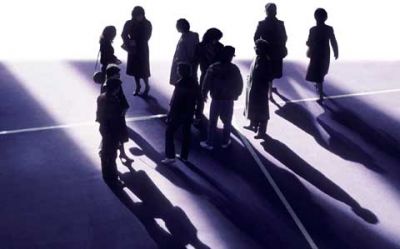 Shaila Dewann of the New York Times wants every municipal government to know something: get with it or your city will go the way of VHS tapes. While I'm sure Dewann's article on the competition between cities to attract the young is documenting a response to what could be a very real movement, it fails to challenge any of the stereotypes that are driving what appears to just be trends. The Times can do better.
Here is how the piece begins:
Shaila Dewann of the New York Times wants every municipal government to know something: get with it or your city will go the way of VHS tapes. While I'm sure Dewann's article on the competition between cities to attract the young is documenting a response to what could be a very real movement, it fails to challenge any of the stereotypes that are driving what appears to just be trends. The Times can do better.
Here is how the piece begins:
Some cities will do anything they can think of to keep young people from fleeing to a hipper town.
In Lansing, Mich., partiers can ease from bar to bar on the new Entertainment Express trolley, part of the state's Cool Cities Initiative. In Portland, Ore., employees at an advertising firm can watch indie rock concerts at lunch and play "bump," an abbreviated form of basketball, every afternoon.
And in Memphis, employers pay for recruits to be matched with hip young professionals in a sort of corporate Big Brothers program. A new biosciences research park is under construction -- not in the suburbs, but downtown, just blocks from the nightlife of Beale Street.
These measures reflect a hard demographic reality: Baby boomers are retiring and the number of young adults is declining. By 2012, the work force will be losing more than two workers for every one it gains.
As a devout basketball fan, I took offense at the word "bump" to describe the game of knockout. It confused me. More important, reading the article left me depressed. Is partying and living the good life the only thing young people in America want these days? Young people aren't interested in community service, their families or perhaps a bit of church?
Why do city leaders see this aspect of American young people as the driving trend that will make or break their population? Are there other aspects worth considering?
Fortunately for our country, Dewann's description of the American young person is incomplete, but she is touching on a trend and trends are tough to report. Other aspects of this trend could include looking at the growth of city churches that attract these young mobile types. Another aspect would be the trend for young people to put off marriage longer and longer. A third aspect to look at would be a trend for people to live away from their parents. The country's values are shifting, and covering that shift could produce some interesting results.
While Dewann dutifully reported these marketing trends, the article did nothing to challenge whether these are positive trends.
While the article was appropriately narrow in focus, future pieces could address the reason the country has experienced a dearth of young people, or in the words of a demographer quoted in the piece, why young people "are rare and desirable." One obvious reason, as Dewann wrote, is that Baby Boomers are growing older and retiring. The other stated but unexplained reason is the number of young adults is dropping. People are obviously not having as many children as they used to. Why would that be the case? Any guesses?
